Ricardo Soto
LINA
A Constraint Programming-based Job Dispatcher for Modern HPC Systems and Applications
Sep 28, 2020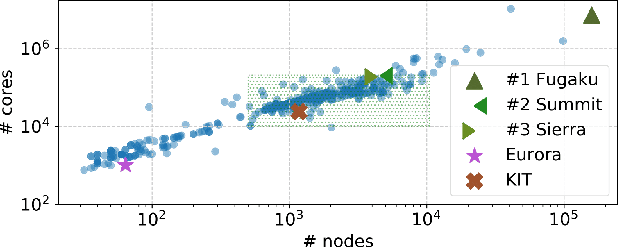



Abstract:Constraint Programming (CP) is a well-established area in AI as a programming paradigm for modelling and solving discrete optimization problems, and it has been been successfully applied to tackle the on-line job dispatching problem in HPC systems including those running modern applications. The limitations of the available CP-based job dispatchers may hinder their practical use in today's systems that are becoming larger in size and more demanding in resource allocation. In an attempt to bring basic AI research closer to a deployed application, we present a new CP-based on-line job dispatcher for modern HPC systems and applications. Unlike its predecessors, our new dispatcher tackles the entire problem in CP and its model size is independent of the system size. Experimental results based on a simulation study show that with our approach dispatching performance increases significantly in a large system and in a system where allocation is nontrivial.
Set Constraint Model and Automated Encoding into SAT: Application to the Social Golfer Problem
Jun 30, 2014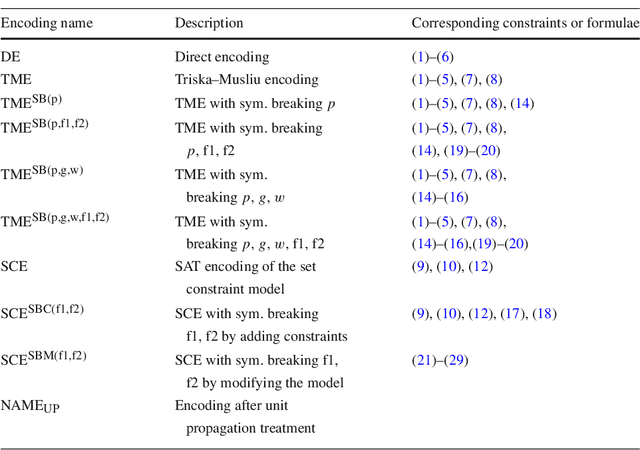
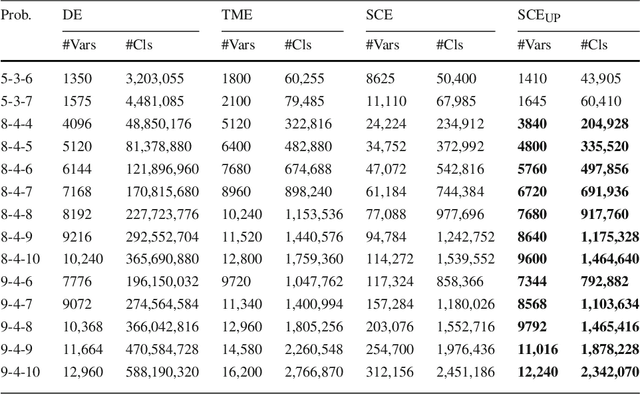
Abstract:On the one hand, Constraint Satisfaction Problems allow one to declaratively model problems. On the other hand, propositional satisfiability problem (SAT) solvers can handle huge SAT instances. We thus present a technique to declaratively model set constraint problems and to encode them automatically into SAT instances. We apply our technique to the Social Golfer Problem and we also use it to break symmetries of the problem. Our technique is simpler, more declarative, and less error-prone than direct and improved hand modeling. The SAT instances that we automatically generate contain less clauses than improved hand-written instances such as in [20], and with unit propagation they also contain less variables. Moreover, they are well-suited for SAT solvers and they are solved faster as shown when solving difficult instances of the Social Golfer Problem.
Using ATL to define advanced and flexible constraint model transformations
Feb 16, 2010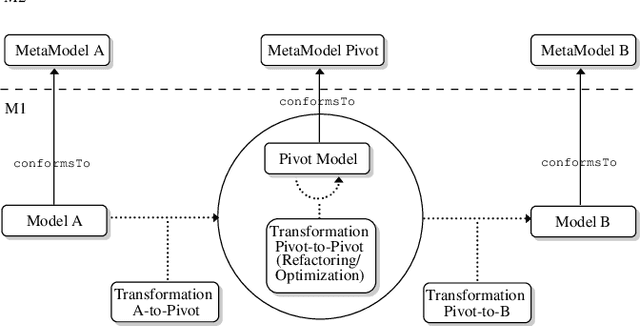



Abstract:Transforming constraint models is an important task in re- cent constraint programming systems. User-understandable models are defined during the modeling phase but rewriting or tuning them is manda- tory to get solving-efficient models. We propose a new architecture al- lowing to define bridges between any (modeling or solver) languages and to implement model optimizations. This architecture follows a model- driven approach where the constraint modeling process is seen as a set of model transformations. Among others, an interesting feature is the def- inition of transformations as concept-oriented rules, i.e. based on types of model elements where the types are organized into a hierarchy called a metamodel.
Rewriting Constraint Models with Metamodels
Feb 16, 2010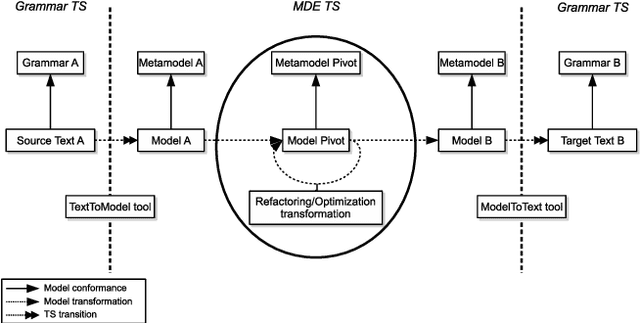

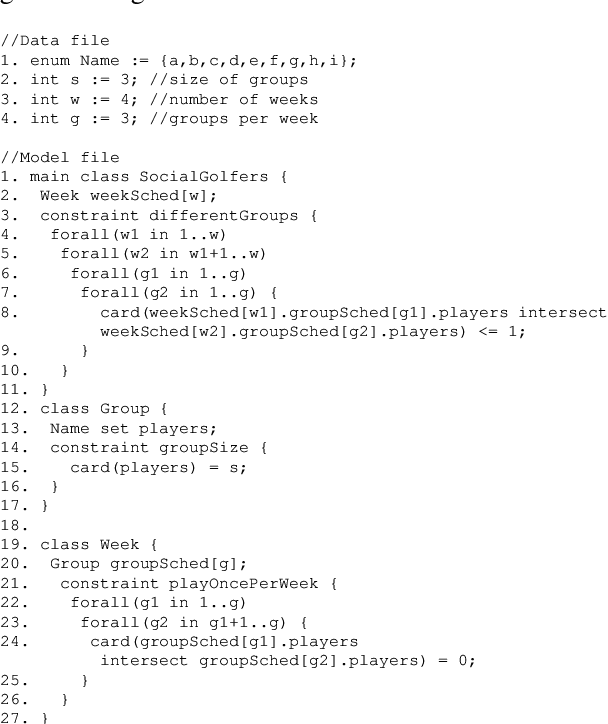

Abstract:An important challenge in constraint programming is to rewrite constraint models into executable programs calculat- ing the solutions. This phase of constraint processing may require translations between constraint programming lan- guages, transformations of constraint representations, model optimizations, and tuning of solving strategies. In this paper, we introduce a pivot metamodel describing the common fea- tures of constraint models including different kinds of con- straints, statements like conditionals and loops, and other first-class elements like object classes and predicates. This metamodel is general enough to cope with the constructions of many languages, from object-oriented modeling languages to logic languages, but it is independent from them. The rewriting operations manipulate metamodel instances apart from languages. As a consequence, the rewriting operations apply whatever languages are selected and they are able to manage model semantic information. A bridge is created between the metamodel space and languages using parsing techniques. Tools from the software engineering world can be useful to implement this framework.
Model-Driven Constraint Programming
Feb 15, 2010
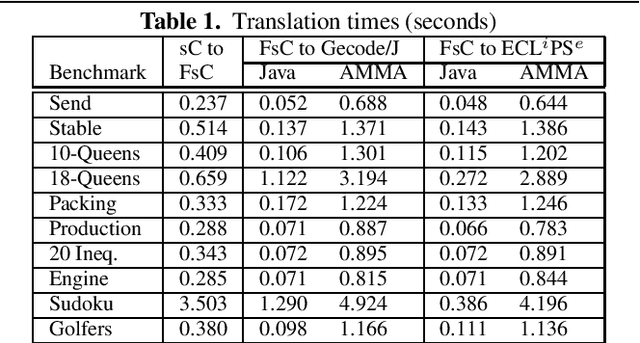


Abstract:Constraint programming can definitely be seen as a model-driven paradigm. The users write programs for modeling problems. These programs are mapped to executable models to calculate the solutions. This paper focuses on efficient model management (definition and transformation). From this point of view, we propose to revisit the design of constraint-programming systems. A model-driven architecture is introduced to map solving-independent constraint models to solving-dependent decision models. Several important questions are examined, such as the need for a visual highlevel modeling language, and the quality of metamodeling techniques to implement the transformations. A main result is the s-COMMA platform that efficiently implements the chain from modeling to solving constraint problems
 Add to Chrome
Add to Chrome Add to Firefox
Add to Firefox Add to Edge
Add to Edge